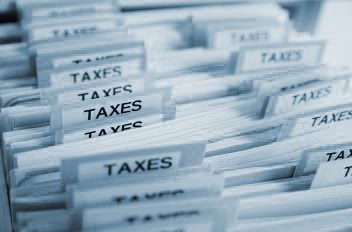Financial Reporting Model (Exposure Draft)—Reexamination of Statements 34, 35, 37, 41, and 46 and Interpretation 6
Project Description – The overall objective is to make improvements to the financial reporting model of governmental financial statements. The improvements would enhance the effectiveness of the reporting model and enhance the ability to assess the government’s accounting and financial data.
The following are areas and issues under consideration:
Management’s Discussion and Analysis (MD&A)
- The MD&A should be presented in five different sections. It should discuss only the most relevant current year information; boilerplate discussion should be avoided.
- The five areas of discussion consist of an introduction, financial summary, detailed analysis, significant capital asset and long-term debt activity, and currently known facts, decisions, or conditions.
Unusual or Infrequent Items
- These items should be presented individually on the government-wide, governmental fund and proprietary fund statements of resource flows as the last item prior to the change in resources. The items should also be disclosed in the notes section.
Required Financial Statements – Governmental Funds
- The financial statements that will be required are the short-term financial resources balance sheet and the statement of short-term financial resources flows. The changes will be most noticeable in the name of the report as well as the change in the measurement focus.
Measurement Focus and Basis of Accounting
- The financial statements for governmental funds should be presented applying the short-term financial resources measurement focus and accrual basis of accounting. Current standards present the governmental funds on the current financial resources measurement focus and the modified accrual basis of accounting.
- Recognition of elements using the short-term financial resources measurement focus is based on whether the event or transaction is considered short-term or long-term. This is determined by the period of time that elapses between the inception of the transaction and the conclusion of the transaction. Short-term transactions are one year or less and long-term are events that are more than one year.
Amendment to Statement 54
- Governmental fund types include the general fund, special resources funds, capital projects funds, debt service funds, and permanent funds. Special resources funds are used to account for and report the proceeds of specific inflows of short-term financial resources from current activities. Current standards have special revenue funds under the governmental fund type.
Presentation of the Proprietary Fund Statement of Revenues, Expenses, and Changes in Fund Net Position
- This statement should distinguish between operating and nonoperating revenues and expenses. The changes will be most noticeable in the name of the report as well as the change in classification in operating and nonoperating revenues and expenses.
Definition of Operating Revenues and Expenses and Description of Nonoperating Revenues and Expenses
- Operating revenues and expenses are revenues and expenses other than nonoperating revenues and expenses.
- Nonoperating revenues and expenses are (a) subsidies received and provided, (b) revenues and expenses related to financing, (c) resources from the disposal of capital assets and inventory, and (d) investment income and expenses.
- Revenues and expenses that otherwise would be classified as nonoperating in most proprietary fund financial statements should be classified as operating revenues and expenses if those transactions constitute the proprietary fund’s principal ongoing operations.
Budgetary Comparison Information
- Budgetary comparison schedules should be presented as RSI for the general fund and each major special resources fund that has a legally adopted annual budget.
- Separate columns for the variances between (a) original and final budget amounts and (b) final budget amounts and actual budget results are required to be presented.
- An analysis of significant variations between original and final budget amounts and final budget amounts and actual budget results also is required to be presented in notes to RSI. The analysis should include any currently known reasons for those variations that are expected to have a significant effect on budgetary fund balance or to produce significant differences from current period budgetary results.
Potential Effective Date
- The requirements of this Statement are effective based on a government’s total annual revenues in the first fiscal year beginning after June 15, 2022, as follows:
- Governments with total annual revenues of $75 million or more should apply the requirements of this Statement for fiscal years beginning after June 15, 2024, and all reporting periods thereafter.
- Governments with total annual revenues of less than $75 million should apply the requirements of this Statement for fiscal years beginning after June 15, 2025, and all reporting periods thereafter.
- Earlier application is encouraged. If a primary government chooses early implementation of this Statement, all component units also should implement this Statement in the same year.
Our governmental audit experts are easily accessible and will quickly respond to any questions you may have. Feel free to call us toll-free at (888) 388-1040.
Source: https://www.gasb.org/jsp/GASB/Document_C/DocumentPage?cid=1176174965673&acceptedDisclaimer=true





